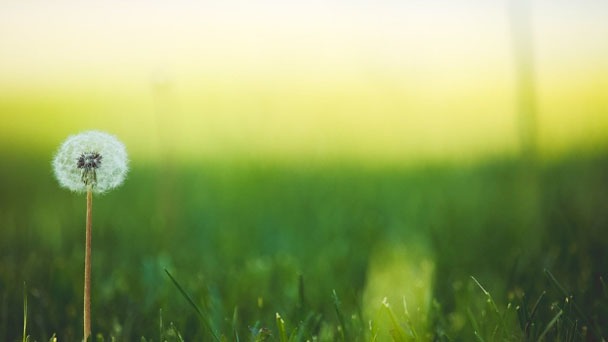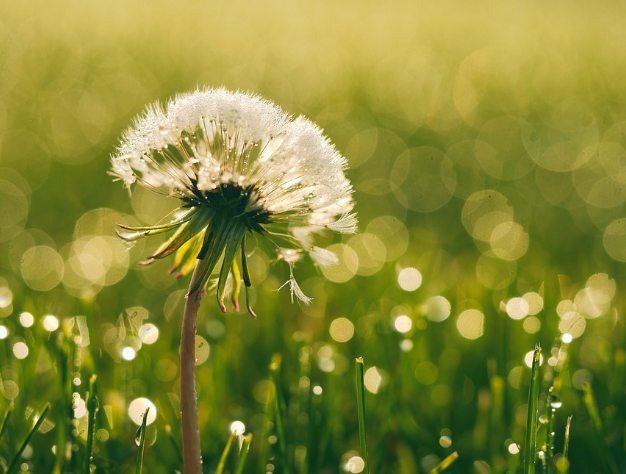Dandelions Harvesting & Preserving - 2023 Guide for Later Use
Written by Ivy
Dec 30 2022

In the genus of flowering plants in the family Asteraceae, dandelions are a perennial plant. You can try the following methods to preserve different parts of Dandelions:
Dandelion Flowers
- Air drying
- Dehydrating
Dandelion Leaves
- Freezing
- Dehydrating
Dandelion Roots
- Dehydrate
- Hanging
These adorable little flowers are a crucial early spring food source for bees and a large number of other pollinators. The plant's entire body, from root to flower to stem to leaves, is edible in addition to being beneficial to bees. You can eat the entire plant. In actuality, for a large portion of recorded history, humans have used dandelions as a food source and herb.
How to Collect Dandelions
If you want to collect dandelions, be sure to do so in an area that you are confident has not recently received any chemical or pesticide treatments. Avoid picking dandelion plants in areas with heavy traffic and close to roads where oil and other pollutants may run off and contaminate the dandelion plants.
On a sunny day, when the dew has dried and the flowers are fully open, we advise picking dandelion blossoms in the early afternoon. To gently remove the flower head from the stem, use your fingers. You could also use a set of kitchen shears, but it's not necessary and using your fingers is faster. You can remove the green sepals while picking or after you've finished gathering the flower heads if your recipe only calls for the petals.
The leaves can be picked by hand or with a pair of kitchen shears, and harvesting them is just as simple. Harvesting small, young leaves is advised because they will be softer and less bitter.
Dandelion roots require a little more effort to harvest, but it's still a quick and easy procedure. You can use the roots right away or dry them for later use. In order to get out of the ground, dandelions can be difficult to pull up due to their deep taproots, which can extend up to one foot deep. At any time of the year, the roots can be harvested. Pull out the entire plant after gently loosening the soil with a garden fork or shovel. Following the plant's removal, shake off any loose soil, separate the roots from the leaves, and carry out the remaining cleaning by rinsing the roots in the sink. The roots can be used immediately after cleaning or preserved for later use.
Read More: How to Grow Dandelions Indoors

How to Preserve Dandelions for Future Use
It's simple to preserve dandelions for later use, which is a great way to benefit from their healing and nutritional qualities in the fall and winter when fresh plants aren't readily available.
Dandelion Flowers
It is simple to dry flowers for later use. Air drying them in the sun is our preferred technique.
- Air drying: Your dandelion flowers should be evenly dispersed and placed in direct sunlight on a smooth, flat surface. Decide on a warm, sunny day. The flowers will start to look noticeably wilted after a few hours. In an airtight container, store loosely.
- Dehydrating: Lay out flat in one layer on a dehydrator rack and dry until wilted.
Dandelion Leaves
For later use, you can freeze or dehydrate the leaves.
- Freezing: Trim and rinse the leaves. Give the leaves a quick blanch in boiling water for two minutes. After draining the leaves, immediately place them in an ice water bath. Use a food saver (our preferred method to freeze and store) or pack into freezer containers.
- Dehydrating: Your leaves should be washed, trimmed, and dried with a towel. Dry completely flat on a dehydrator tray. In an airtight container, loosely store.
How to Freeze Greens?
- Ice water should be added to a tidy sink or sizable bowl. Place a pot over medium-high heat and add water. Bring to a boil.
- For one minute, add the washed dandelion leaves. Drain right away, then submerge in the ice water you've prepared.
- The leaves should be patted dry after they have completely cooled. Add to freezer bags. Place the bag in the freezer for up to a year after writing the date and contents on it.
These frozen dandelion leaves are fantastic in any cooked dish, even a straightforward saute.
How Are Dandelion Greens Dehydrated?
- Afterwards, pat the dandelion leaves dry. Place on a dehydrator's tray.
- Dehydrate until crisp and completely dry using a 135 degree Fahrenheit setting. Store in a cool, dry, and dark area in an airtight container.
Dandelion leaves that have been dehydrated taste great in soups and stews or crushed and used as seasoning.
Dandelion Roots
There are several ways to preserve fresh dandelion roots after harvesting and cleaning them.
- Dehydrate: Place roots on a dehydrator tray after cutting them into thin strips. Continue to dehydrate until the pieces are brittle to the touch
- Hanging: Individual roots should be tied together and hung in a cool, dry area with good airflow. To the point of brittleness, let the roots air dry. Depending on your health, this could take anywhere from a few days to several weeks. Reduce the roots' size once they have dried.
- Alternatively, you could set the roots on a raised screen in a cool, dry area with sufficient airflow.
Keep your dried roots out of direct sunlight by putting them in a glass container (we use Mason jars for this).
4 Handy Uses for Dandelions
Learning how to preserve dandelions is a good idea because there are so many uses for this plant. These bright yellow flowers can be beneficial in the following ways:
1. Eating Dandelions
No matter if you plan to make a salad with the fresh leaves or add them to your favorite cooked dish. You can boil the flowers and then cook them with any seasoning of your choice in a frying pan. Dandelion flowers can even be turned into fritters by dipping them in a tasty batter mixture and deep frying them in oil. Fresh dandelion can be added to iced tea for a light lemony taste, made into dandelion honey and the flower petals can be added to baking mixes for pancakes, muffins, and cookies.
2. Dried Dandelions
Dandelion greens can be dried and used in a variety of ways in addition to the flowers. And dandelion greens will keep for months if they are correctly dried and stored. The dried leaves can either be sprinkled directly onto salads, added to soups and stews, or crushed and added to herbal tea blends.
3. Dandelion Fertilizer
It should come as no surprise that dandelions can be used as an organic fertilizer for your garden beds, just like any plant material. Instead of just throwing away unused dandelion stalks and roots, consider repurposing them as a fantastic (and entirely natural) fertilizer alternative. Dandelions are packed full of the many nutrients that healthy soils require.
4. Dandelion Oil
Making your own herbal salve, balm, or oil at home is simple. They not only have pleasant scents, but they also have antiseptic and anti-inflammatory qualities that can naturally heal minor cuts and abrasions on the skin.
- Read More: Can Dogs Eat Dandelions
Conclusion
The aerial portion of the dandelion can be preserved more effectively by freezing because this method preserves more of its medicinal value than drying does. You can store the entire dandelion and use it later. Dandelion is most frequently used to make coffee or tea. Dandelion can be harvested in the spring and used all through the year.
FAQs
How to Preserve Dandelions for Tea
You can simply leave the dandelions out in the sun to dry them and prevent oxidation. As an alternative, you can roast them in the oven. Roast for two to three hours with the oven at 250 degrees. Put your dried dandelion plants in an airtight glass jar to keep them safe.
How to Preserve Dandelion Root
From spring until fall, the roots are harvested. They should be thoroughly cleaned to remove all dirt. By hanging it up to dry or using a dehydrator, dry the entire dandelion root.
Do You Have to Dry Dandelions before Making Tea?
There are commercially available varieties of dandelion root tea, dandelion flower tea, and dandelion leaf tea, but you can also make them at home. For making dandelion flower tea, pick young flowers or either dry them or use fresh. Young tea leaves should be harvested and dried to make dandelion leaf tea.Latest Updated
- Benefits of Bugleweed - 7 Science-backed Health Benefits
- Bugleweed Dangers & Side Effects - Is It Poisonous?
- How to Plant Evergreen Trees - What You Should Know
- When to Plant Evergreens - Grow Guide for Evergreen Trees
- 12 Wonderful Evergreen Shrubs for Your Garden
- 12 Popular Evergreen Plants with Pictures for Beginners
- When And How To Prune A Lilac Bush Like a Pro
- How to Grow & Care for Lilac Vine (Hardenbergia Violacea)
- Japanese Lilac Tree (Syringa Reticulata) Care & Propagation Guide
- Shumard Oak Pros and Cons - What to Know
Popular Articles
- Winter maintenance of Antirrhinum Majus
- How to Grow Terminalia Mantaly Tree
- How to Grow and Care for Crossostephium Chinense
- How to grow Antirrhinum Majus in spring
- Peristeria Elata (Dove Orchid) Profile: Info & Care Guide
- Underwatered Snake Plant (Sansevieria Trifasciata) - Signs And How To Fix
- How to Care for Brazilian Jasmine Plant (Mandevilla Sanderi)
- How to Grow & Care for Graptopetalum Purple Delight in Summer
- Rosa Chinensis (China Rose): Plant Growing & Care Tips
- How to Care for Baby Sun Rose (Aptenia Cordifolia)